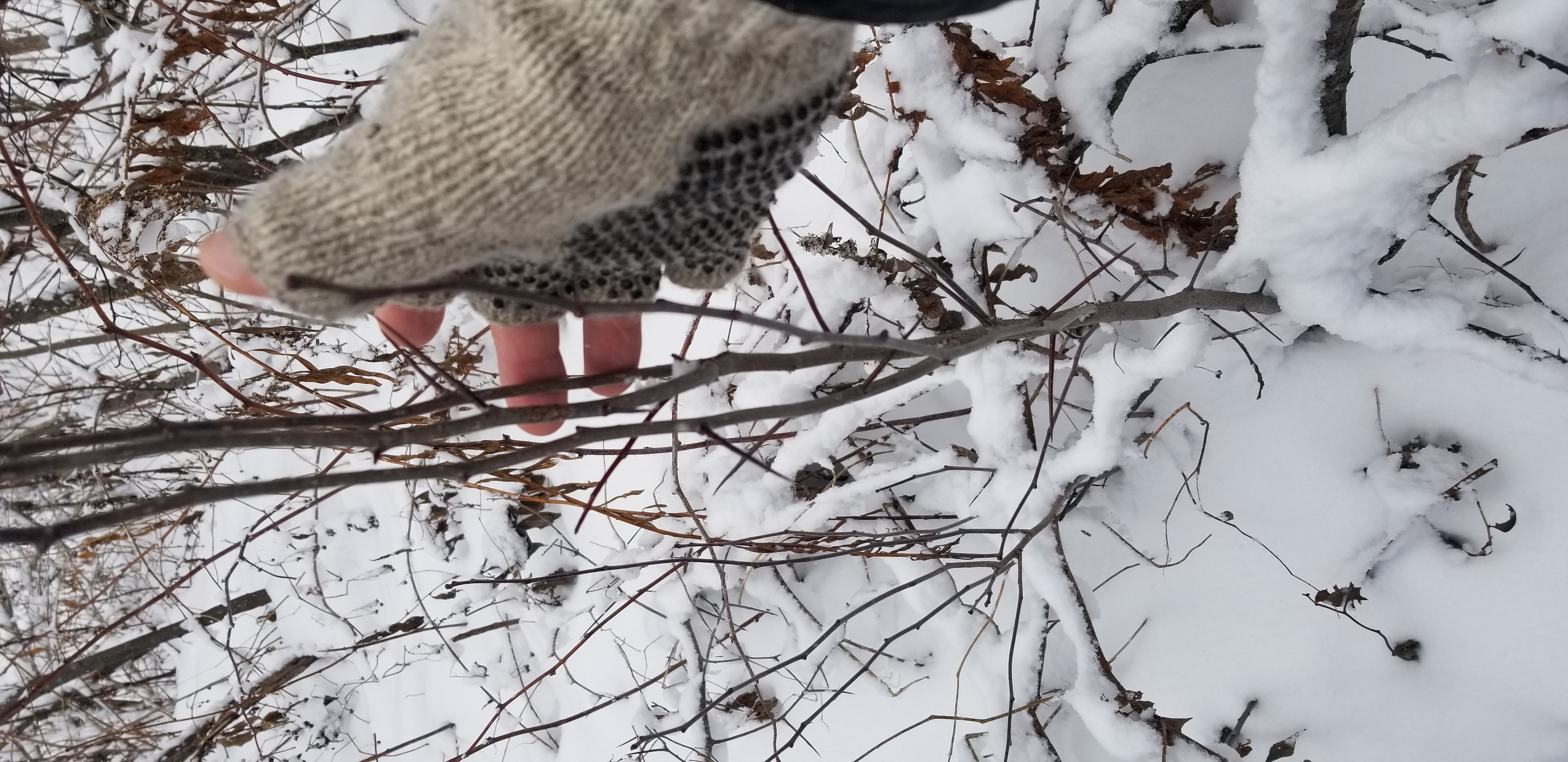Winter in Maine
Published:
Our winter break is over; gone are the northern woods of Maine, back to Raleigh to finish the second year of my Ph.D. I’m trading the snow in the north for the thunderstorms of the south.
This winter is a warmer one. The snow fell later and did not stay as long. It was not until mid-December that the snow began to fall regularly – abnormal for the far north. Despite this, I took advantage of what little “true” winter I could enjoy.
Part of this enjoyment was going for walks in the snow. During one such trip, to gather firewood, I discovered small tracks from a neighbor who had taken shelter beneath our wood pile. It did not take long to meet this furry fellow: an American red squirrel. If I was quiet, I could hear him barking happily as he munched on hawthorn berries in the front yard. On approach, his happy barking would turn into what can only be described as a high-pitched, machine gun-like squeaking. I believe this to be an alarm call. After a few moments of this he would hop from his branch and scamper away across the snow, his tail upright.
The cabin in which I spent most of my winter break is surrounded by these hawthorn shrubs and trees. Their berries make for an excellent snack for the local wildlife but their branches, as their name suggests, deal a nasty poke to any unsuspecting bushwacker. The smaller shrubs, the ones our squirrely neighbor prefers, possess small thorns and fat, bright red berries. These prickly bushes I believe to be scarlet hawthorn.
A taller tree species of hawthorn looms further into the woods. This species, which I believe to be English hawthorn, is much larger, with some specimens standing in excess of 15 feet. They are less forgiving of unsuspecting passersby, with their thorns growing more than an inch in length. The berries on these trees are a brilliant red but much smaller than those of the shrubs our neighbor prefers. These berries are well protected from furbearers, but perhaps still obtainable by birds. A young sapling was well armed with these spindly thorns despite not having any flower buds, suggesting they are also used to keep larger mammals from trampling them (as I almost did). I snapped a photo of the young tree, which you can see below.

I was surprised during my trek in the snow to see songbirds overhead, and even caught glimpse of a few ravens cresting over the tree line. They are very large birds, evident even from far away, and their calls are rough like a smoker and hang in the air for quite some time.
Evergreen trees keep much of the snow from falling to the ground, making small animal tracks more easily discernible beneath their branches. The foot traffic suggests that small critters quite enjoy these spots. Trees also offer a quick escape in the event of a nosy intruder (such as myself) or a hungry predator.
The lower canopies of these evergreens are baren. During the summer, I blamed this on a species of lichen I’ve since identified as old man’s beard. Where the trees are bald the lichen flourishes. I have learned that the lichen is not to blame, and merely takes advantage of the needleless branches to flex its own capacity for growth. I spotted one large piece of said lichen supporting the side of a nest high in the branches of one tree. Perhaps this is how the species travels from tree to tree?
I have a few side projects churning, including a project in which I grow a brain from a cellular automaton and an afternoon history project on the contribution of turnips to the eradication of malaria in northern Europe. I hope I can post about both soon. My opioid model publication is very close to appearing; I am hopeful it will at least make it to arXiv by the end of this month. The appearance of Omicron has severely dampened my excitement for the new year – let us hope it gets better!!
